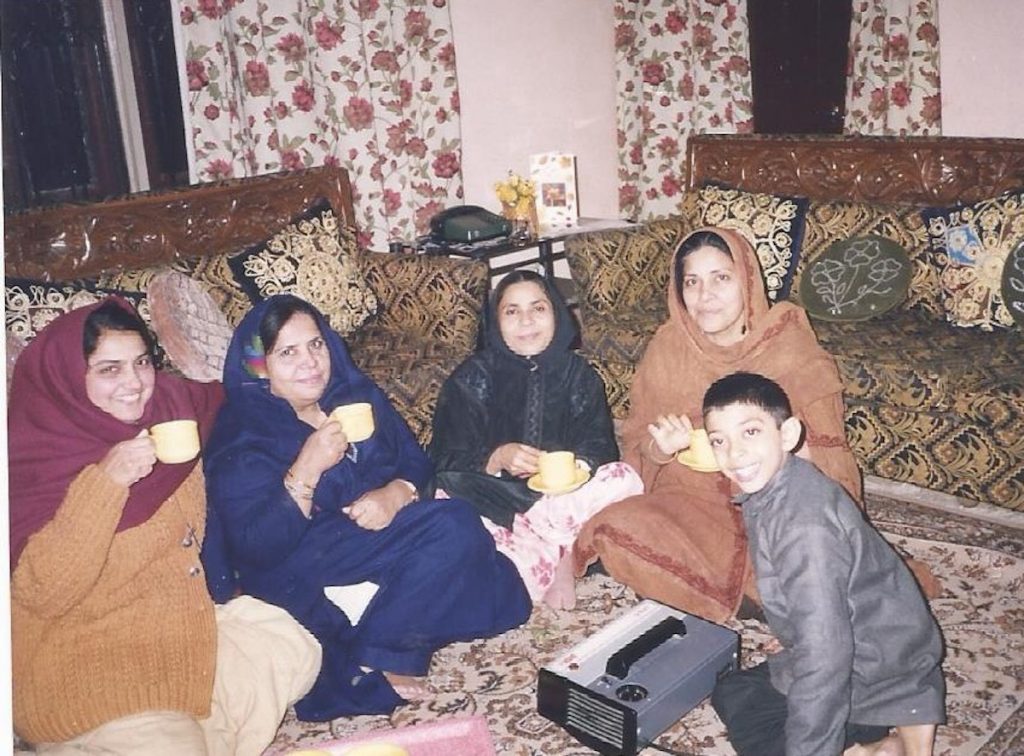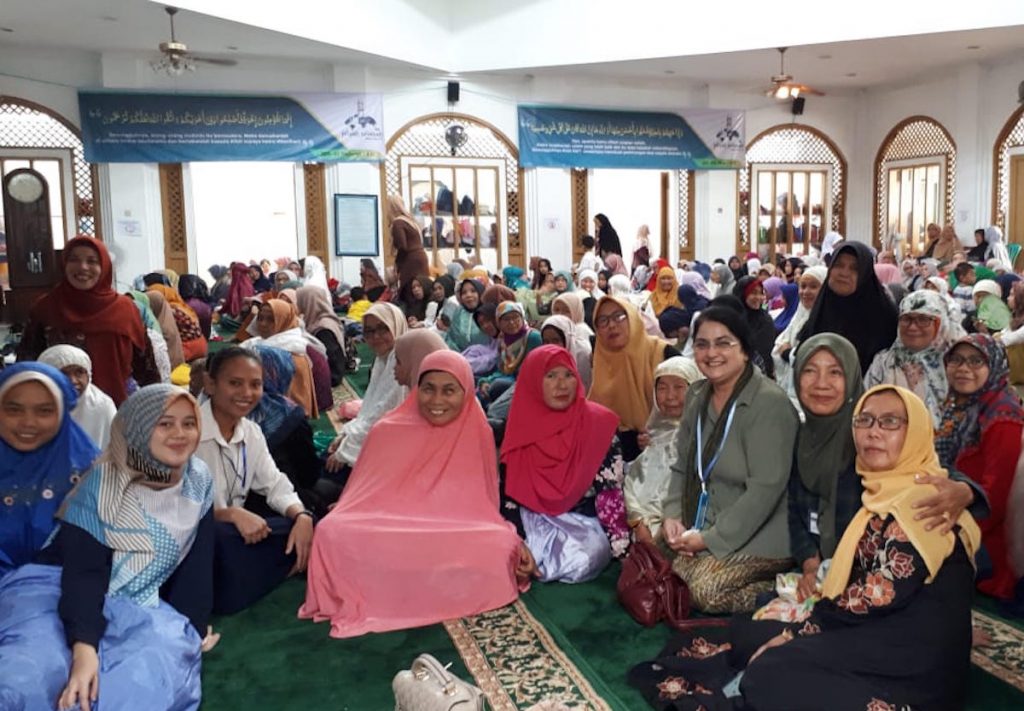Mohammed Quraishi, a suspected criminal, did not believe in fasting during the month of Ramadan, till he met a Catholic nun who dutifully observed the fast.
It struck him like a bolt of lightning as he tried to comprehend this strange phenomenon. He was curious to know why a non-Muslim fasted during Ramadan, so he approached the nun who was Sister Gerardette Philips, but people cautioned her not to speak to him as he was a ‘criminal’.
Quraishi had noticed a tailor offering the nun some dates — an act that signalled the end of the fast for the day. The tailor’s shop at Kurji mod in Patna, the capital city of India’s eastern Bihar state, was on way to Sister Gerardette’s home from a school for special children where she taught.
Years later when she returned to Patna, she was approached by Quraishi once again. He was waiting to tell her that he had started fasting after 50 years inspired by her. Now his children and grandchildren all fast.
Sister was equally happy that her fasting had turned a ‘once considered criminal’ into an agent of change for many.
But how did it all begin?
To Sister Gerardette, the fourth among five children of Catholic parents, the idea of fasting at Ramadan occurred during one Lenten season.
“In 1991, Lent and Ramadan coincided and that’s when I started fasting. I was working with special children and the Muslim students were fasting as well,” Sister Gerardette said.
Since then — for the past 30 years — she has regularly fasted during Ramadan.
“Yes, the Muslim community appreciated it too,” she said.
Citing an incident, she said: “When I was in Delhi doing a course in special education at Jamia Millia Islamia University at Okhla every morning the Muslim women in the neighbourhood would place a glass of milk on my window sill to begin the fast.”
In the evening they would gather and invite her to speak to them about forgiveness and love. They would break the fast together.


One day a group of Muslim women from the university called her to pray for a Christian boy who was to be hanged in Pakistan for blasphemy for graffiti painted on the walls of a Masjid. The women prayed so that the boy would be freed. To everyone’s delight the boy was set free.
“Yes, faith can move mountains. All of us experienced the power of prayer,” Sister Gerardette said.
On what is the difference between fasting for Ramadan and Lenten fasts, she said: “Both are grace-filled days — for seeking mercy, reconciliation and forgiveness. A sense of giving to the poor, of coming closer to God.”
In Lent, believers walk with Jesus in His passion and in Ramadan followers of Islam celebrate the revelation of the Holy Quran, she said.
“Fasting is not about giving up food. It is about creating a space and strength to receive God’s mercy and love — more than we give, we receive from the Lord,” Sister Gerardette said.
Fasting helps us train our minds, our hearts as well as our bodies. It is a commitment and requires a discipline, said the 55-year old who fasts all 40 days during Lent.
On how she managed as her community doesn’t fast during Ramadan, she said: “I get up at three in the morning. Have a cup of coffee and an apple or banana. Then I meditate and after which I go for Holy Mass. The next meal or even a sip of water is had after six in the evening as do my Islamic friends.”
Sister Gerardette had a fascination for Islam since childhood.
“I joined the Religious of the Sacred Heart of Jesus in India with what one would consider ‘a vocation within a vocation’ and that vocation was to encounter God in the heart of my Muslim sisters and brothers,” she said.
Interreligious dialogue could help us to overcome prejudices and develop respect for ‘the other’, said the nun who is a member of the Islamic Studies Association.
“I met wonderful people, including Fathers (late) Paul Jackson, Christian Troll, Michael Fritzgerald and Victor Edwin and Sister Fatima, dedicated to the same call in the association,” she said.
An early example dialogue with Muslims was St. Francis of Assisi more than 800 years ago when he met the then Sultan of Egypt, Al Malik Al Kamil.
More recently, reviving that spirit, Pope Francis and the Grand Imam of Al-Azhar, Ahmed el-Tayeb, signed the Document on Human Fraternity for World Peace and Living Together, in Abu Dhabi in February 2019.


Sister Gerardette has a post graduate degree in Islamic philosophy and mysticism and a doctorate in philosophy of religion.
She has published “Beyond Pluralism” in English and “Integritas Terbuka” (Open Integrity) in Indonesian besides several articles. She is a much sought after to speak at national and international inter-faith seminars.
In 2005 she was appointed as a consultor to Pope Benedict XVI in the Pontifical Council of Interreligious Dialogue, Commission for Religious Relations with Muslims. She was also a speaker at the United Nations 62nd General Assembly on Best Practices and Strategies for Interreligious and Intercultural Cooperation for Peace: Going Forward.
In Muslim majority Indonesia, where she was posted in 2000, she is actively engaged in dialogue among people of different religions, particularly between Muslims and Catholics.
She teaches at Parahayangan Catholic University and at the Faculty of Religious Studies of Bandung State Islamic University. She has given Islamic-Christian retreats. She is also the director of novices and leader of her congregation in Indonesia.
Her Muslim students who learn Catholicism and Christian students who learn Islam, bravely come together to exchange their learnings. Some Muslim students fast on Ash Wednesday and Good Friday and their Christian counterparts at Ramadan.
A few years ago, her Muslim students enacted the Way of the Cross.
The stations were the ‘case studies’. The first station was a woman who places a mask on her child’s face who dances at the traffic lights to earn a living. Jesus carrying His cross was a man who carries loads of food on his shoulders to sell was another, as was Jesus stripped of His garments had the mountain stripped of its grandeur in the background. Mary with the body of Jesus was Mary with a whole lot of abandoned children was another.
“What better way can we understand this mystery if not in our contemporary world?” she said.


